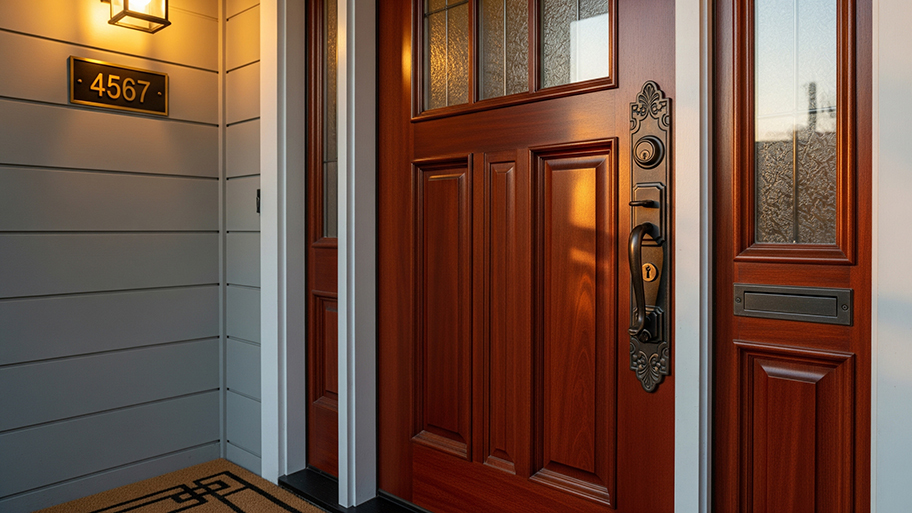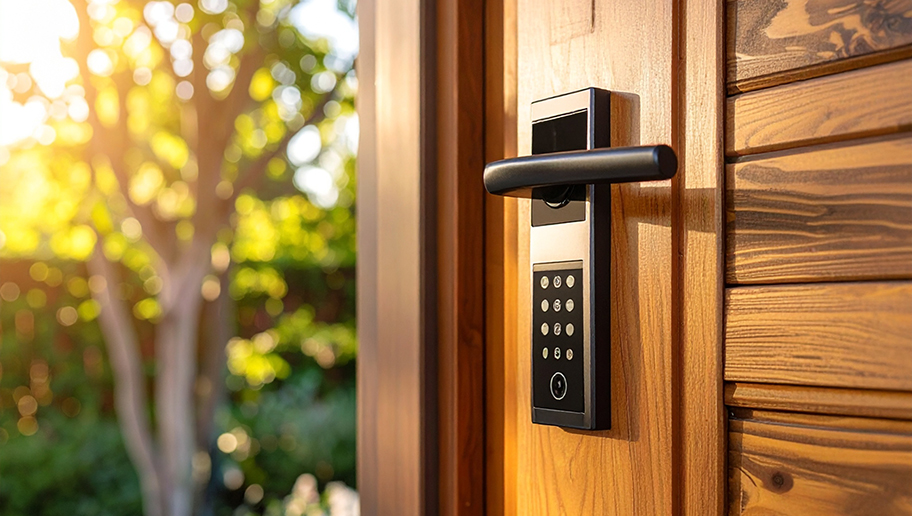
Wondering how much a locksmith costs? Discover locksmith prices, key cost factors, and tips to save on home lockout, rekeying, and installation services.
A trip to the hardware store or a visit from the locksmith can significantly increase the safety of your sliding door


At the peak of summer, when weekend barbecues and long afternoons in the backyard abound, a glass sliding door is the ideal addition to your home. On the other hand, these doors may not always make your home feel the most secure.
But don't fret—there are a handful of ways to bulk up the security on your glass door—from installing stronger locks to keeping your door frame up to date.

Criminals often exploit sliding glass doors because they come with certain vulnerabilities that can make them easier to break into than standard doors. Therefore, it’s crucial to regularly evaluate the condition of your sliding glass door and address any potential issues to ensure your home’s protection. If you notice any of the following problems, make sure to fix them ASAP to prevent intruders.
Most glass doors include a latching lock accessible only from the inside. The lock itself consists of a metal hook that slips into the door frame. When the latch attachment loosens and starts to slip, it may no longer hook correctly. If you can move the door with a light tug—even when it's latched—it could be time for a tightening or replacement.
Dirt, rust, and other debris can build up under the track of the door, making it difficult to slide. Over time, a door without a clear grip can become easier to pull off its track altogether.
Since most sliding glass doors sit at the back or side of the house, they are often hidden from view. Without proper lighting or a sensory alarm, unwanted visitors may have an easier time accessing the door.
If your lock didn't pass the test, it might be time to call your local locksmith or to take a look at the door mechanism yourself.
Most sliding glass door locks include an easily accessible adjustment screw on the inside of the door itself. Here's what to do:
1. Use a small screwdriver to turn the screw counterclockwise above the latch.
2. The screw should move the latch into a new position, either up or down.
3. Test the door to see which positions lock most effectively.
4. You may also need to adjust the lock strike on the door frame by loosening the two screws on the plate.
You can also use these screws to fully remove the latch and bring it to your local hardware store for a closer look.
You'll find a range of creative sliding door locks on the market, many of which are built specifically to deter intruders. The right one for you often comes down to the material of your patio door and how it latches.
Some locks sit at the base of your door and screw into the bottom frame. These work in tandem with your latching system and are typically hard to see if you're trying to enter the home from the outside.
You will also spot metal locks that include a loop mechanism that is attached to both doors. Others fit along the bottom slider to protect against someone lifting it off its track.
While they may look simple, security bars are some of the most common DIY additions to a sliding door. Cut a thin block of wood that fits in the track next to your sliding door to keep it from opening. You can also purchase metal options with screw-in attachments and adjustable arms for around $25.
Security bars are also a great idea if you want to secure your basement windows.
Adding a security system may cost more than the other options on this list but provides extra peace of mind if you're concerned about unwelcome guests. Sliding door alarms range from sensor lights to security cameras.
You can also opt for an alarm that beeps each time the door slides or goes off if it is forced open. Some alarms specifically trigger if something or someone breaks the glass itself.
Mark your calendar to clean the track at least once a season. As stones, dirt, and leaves collect below the door, it's much easier to knock off its track. A sliding glass door specialist can also help you replace the track if it has become too worn or warped over time.
The glass itself is often a concern for homeowners, especially when it comes to privacy. You have a few options here. Outside of covering the windows with curtains, add a window privacy film to your doors for one-way viewing.
The most extreme cases may call for a hurricane glass door. These high-impact-proof glass doors are designed for storms, so they are difficult, if not impossible, to shatter.
While there are plenty of ways to upgrade, clean, or inspect your sliding doors on your own, have your local sliding door expert take a look if you have more concerns. Whether you're headed on vacation or simply want to sleep more soundly, a secure door is the key to a sense of well-deserved safety.
From average costs to expert advice, get all the answers you need to get your job done.

Wondering how much a locksmith costs? Discover locksmith prices, key cost factors, and tips to save on home lockout, rekeying, and installation services.

Wondering how much does it cost to copy a key? Discover prices, key types, and cost-saving tips to help you budget for your next key duplication.

Uncover the cost of lock replacement. Discover labor, materials, and cost-saving tips for your next lock replacement project.

Discover how to fix a door lock. These steps provide expert guidance. Learn how to troubleshoot and repair common issues.

Learning how to change a door lock is simple. All you need are a few common tools, a few minutes of your time, and this handy step-by-step guide.

Keypad door locks come in many models, both electrically powered and not. No matter which one you have, it’s easy to learn how to reset a door lock of any kind.